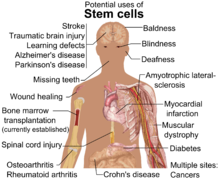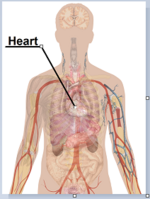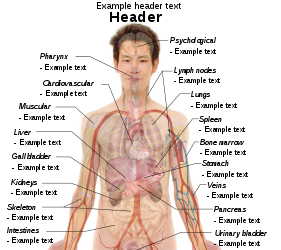Fasciculus:Stem cell treatments.svg

Size of this PNG preview of this SVG file: 731 × 600 elementa imaginalia. Aliae mensurae: 293 × 240 elementa imaginalia | 585 × 480 elementa imaginalia | 936 × 768 elementa imaginalia | 1 248 × 1 024 elementa imaginalia | 2 496 × 2 048 elementa imaginalia | 1 450 × 1 190 elementa imaginalia.
Sua resolutio (fasciculus SVG, nominale 1 450 × 1 190 elementa imaginalia, magnitudo fasciculi: 427 chiliocteti)
Historia fasciculi
Presso die vel tempore fasciculum videbis, sicut tunc temporis apparuit.
| Dies/Tempus | Minutio | Dimensiones | Usor | Sententia | |
|---|---|---|---|---|---|
| recentissima | 05:06, 4 Martii 2012 |  | 1 450 × 1 190 (427 chiliocteti) | Mikael Häggström | Reuploaded, as it still shows as previous version in Wikipedia |
| 10:19, 19 Februarii 2012 |  | 1 450 × 1 190 (427 chiliocteti) | Mikael Häggström | Updated | |
| 10:15, 5 Maii 2009 |  | 1 450 × 1 190 (1.29 megaocteti) | Mikael Häggström | transparency modification | |
| 04:48, 27 Aprilis 2009 |  | 1 450 × 1 190 (1.29 megaocteti) | Mikael Häggström | {{Information |Description={{en|1=g}} |Source=Own work by uploader |Author=Mikael Häggström |Date=g |Permission= |other_versions= }} <!--{{ImageUpload|full}}--> |
Nexus ad fasciculum
Ad hunc fasciculum nectit:
Usus fasciculi per inceptus Vicimediorum
Quae incepta Vici fasciculo utuntur:
- Usus in af.wikipedia.org
- Usus in ar.wikipedia.org
- Usus in cs.wikipedia.org
- Usus in el.wikipedia.org
- Usus in en.wikipedia.org
- Usus in en.wikiversity.org
- Usus in es.wikipedia.org
- Usus in et.wikipedia.org
- Usus in fa.wikipedia.org
- Usus in he.wikipedia.org
- Usus in hy.wikipedia.org
- Usus in ja.wikipedia.org
- Usus in kk.wikipedia.org
- Usus in km.wikipedia.org
- Usus in ko.wikipedia.org
- Usus in lt.wikipedia.org
- Usus in ml.wikipedia.org
- Usus in mn.wikipedia.org
- Usus in pt.wikipedia.org
- Usus in ru.wikipedia.org
- Usus in ta.wikipedia.org
- Usus in th.wikipedia.org
- Usus in uk.wikipedia.org
- Usus in zh.wikipedia.org































